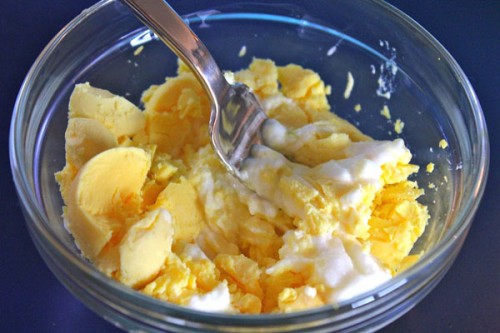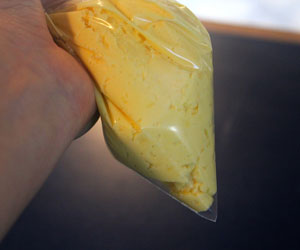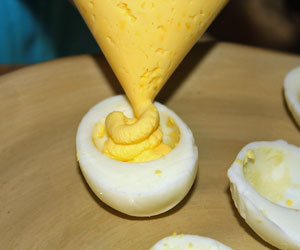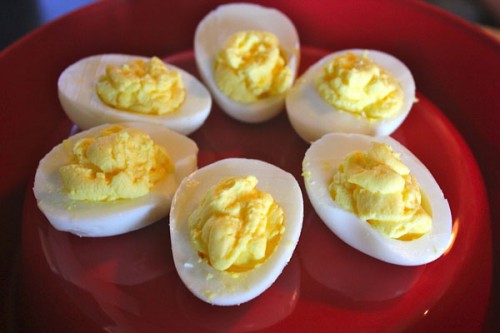Fruits for Dogs
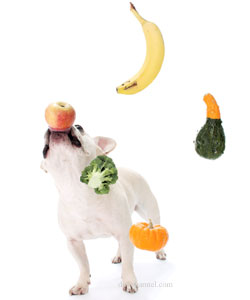
Feed fruits to your dog as a small training treat or stuff your dog’s favorite treat stuffer toy with some peanut butter and fruit for a great and healthy occupier.
Tips for Feeding Fruit to Dogs
Always talk to your veterinarian about any treats you feed your dog, including fruit.
Give your dog small portions of fruit only, especially the first time feeding them to your dog. Even though fruit is good for him, fruit is not calorie free. Also, you don’t know if your dog will have an allergic or other adverse reaction, such as gas or an upset stomach.
Clean fruit thoroughly before offering it to your dog.
If you can, introduce small portions of fruit to your dog when he is young. He may be more likely to try it and like it.
Some dogs don’t like raw fruit. Try mashing it into their food or adding it as an ingredient when you make homemade dog treats. You can also use fruit juice, but make sure it is 100 percent fruit juice and not added sugars.
Avoid feeding your dog any type of seeds or pits. Although not all seeds are known to cause problems, it is better to be safe than sorry. What is known to be problematic or toxic are apple seeds, apricot pits, nectarine pits, plum pits, cherry pits and peach pits.
Check out this list of 13 fruits (and melons) for dogs and their benefits to get you started.
Apples: Source for potassium, fiber, phytonutrients, flavonoids, vitamin C. Note: Do not give dogs the core or the seeds, which contain arsenic. (Half of an apple slice is a good size treat.)
Bananas: Source of potassium and carbohydrates. (1 inch is a good size treat.)
Blackberries: Source of antioxidants (anthocyanins), polyphenols, tannin, fiber, manganese, folate, omega-3. High in vitamins C, K, A and E. (2 or 3 blackberries is a good size treat.)
Blueberries: Source of antioxidants, selenium, zinc and iron. High in vitamins C, E, A and B complex. (2 or 3 blueberries is a good size treat.) Cantaloupe: Source for vitamins A, B complex, C, plus fiber, beta-carotene, potassium, magnesium, thiamine, niacin, pantothenic acid and folic acid. (1 inch of cantaloupe wedge is a good size treat.)
Cranberries: Source for vitamin C, fiber and manganese. Helps fight against urinary tract infections, plus balances acid-base in dog’s body. (2 tablespoons of stewed cranberries added to dog’s food is good size portion. Note: To stew cranberries, put them in a saucepan with water, cover and cook until tender. Put them through a sieve and add to dog food.)
Kiwis: Source of fiber, potassium and high in vitamin C. (A half a slice or one slice of kiwi is a good size treat.)
Oranges: Source for fiber, potassium, calcium, folic acid, iron, flavonoids, phytonutrients, vitamins A, C, B1 and B6. (Half of a segment is a good size treat. May cause stomach upset if fed in too big a portion. Remove the rind and any seeds.) Do no feed your dog any part of the orange tree—see below.
Pears: Source for fiber, folic acid, niacin, phosphorus, potassium, copper, pectin and vitamins A, C, E, B1 and B2. (1 or 2 pear cubes is a good size treat.)
Pumpkin: Source for fiber, beta-carotene, alpha-carotene, zinc, iron, potassium and Vitamin A. Note: Although you can feed your dog pumpkin seeds, most recommend feeding them to dogs unsalted, roasted and then grounded. Do not feed your dog any other part of the pumpkin due to the small, sharp hairs on the pumpkin stem and leaves. (1 to 3 tablespoons of pureed pumpkin [not pumpkin pie mix] is a good size treat.) Learn more>>
Raspberries: Source of dietary fiber, antioxidants, potassium, manganese, copper, iron, magnesium. Rich in vitamin C, K and B-complex. (2 or 3 raspberries is a good size treat.)
Strawberries: Source for fiber, potassium, magnesium, iodine, folic acid, omega-3 fats, vitamins C, K, B1 and B6. (A half or 1 strawberry is a good size treat.)
Watermelon: Source of vitamins C and A, potassium, magnesium and water. Do not feed your dog the seeds or rind. (1 to 3 pieces of 1-inch watermelon wedge is a good size treat.)
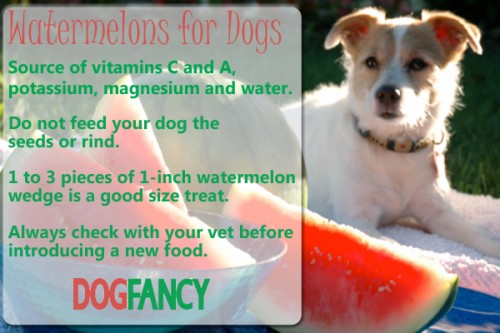
Although some fruits in small portions can be good for your dog (unless your dog is allergic), never offer your dog the following. If your dog accidently eats the below fruit, contact your veterinarian immediately.
Grapes or Raisins: They have caused many cases of poisoning when ingested by dogs.
Avocados: They could cause gastrointestinal irritation.
Figs: Figs have caused allergic reactions in some dogs. Also, the fig is grown on the Ficus tree (Ficus benjamina), which causes skin inflammation if your dog comes into contact with it. Ficus plants or trees also cause diarrhea and vomiting if your dog ingests them.
Orange tree: The orange tree (Citrus sinensis) is toxic to dogs, cats and horses due to its psoralens and essential oils. You don’t want your pet to ingest the seeds, peel, leaves or stem of this tree or fruit. Symptoms of orange tree poisoning are depression, diarrhea and vomiting.
Lemon tree: The lemon tree (Citrus limonia) is toxic to dogs, cats and horses due to its psoralens and essential oils. You don’t want your pet to ingest the seeds, peel, leaves or stem of this tree. Symptoms of lemon plant poisoning are depression, diarrhea and vomiting.
Dog-Friendly Cucumber Dip
We all love veggies and dip and your dog will too! Check out this refreshing, healthy and super easy recipe you and your dog can both enjoy. Cucumbers are a good source of vitamin K and yogurt is great for your dog’s digestive system. As with any treat, you will want to feed in moderation, especially if it’s your first time feeding a particular snack.
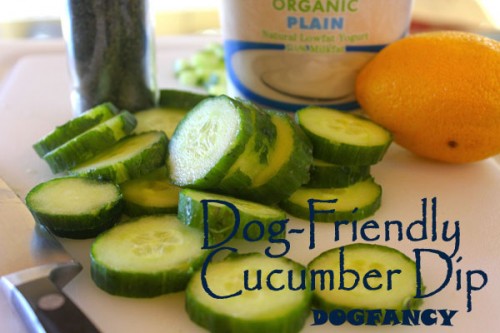
1 medium cucumber, or 1/2 hothouse cucumber
1 1/2 cups of yogurt (plain, unsweetened)
1 tbsp fresh dill or 1 tsp dried dill
1/2 lemon (squeezed)
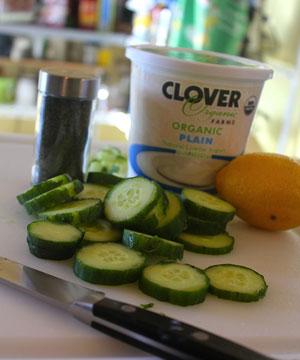
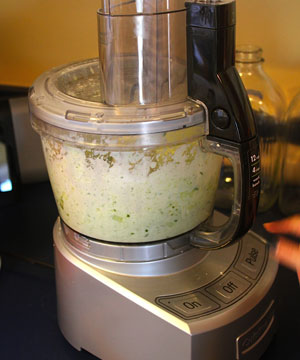
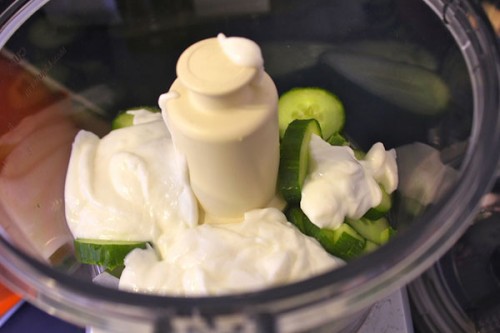
Slice up your cucumbers. If you are using cucumbers with a thicker skin, make sure to peel them before slicing.
Place cucumber in food processor with 1 cup of yogurt, lemon juice and dill.
Blend until cucumber is small and well-blended with other ingredients
Mix in additional 1/2 cup of yogurt
Place in a small bowl and put in refrigerator to set. The dip will thin once it is blended, so it is important to let it rest in the fridge for at least an hour and overnight if possible.
**If you are looking for a thicker dip, place your cucumbers in the food processor alone and then strain them in a cheese-cloth to pull out the extra liquid before mixing them with the yogurt.
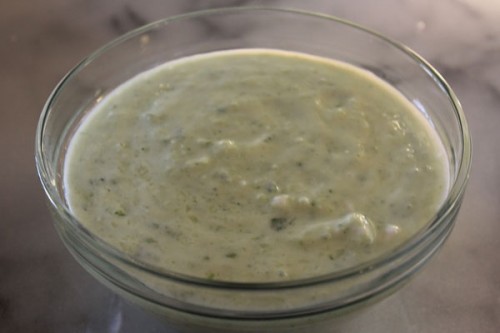
Liver Dog Treat Recipe
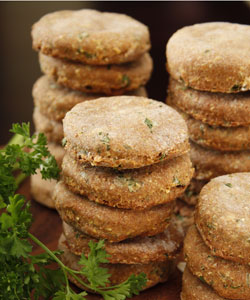
Although liver is good for humans and dogs, not everyone likes to prepare it. Liver shy? Try out these easy recipes using freeze-dried liver. Make these homemade liver treats for your dog.
Ingredients:
1/2 cup freeze-dried liver
2 tablespoons fresh parsley (chopped) or 1 tablespoon dried parsley
2 cups whole-wheat flour
1/2 cup wheat germ
1/3 cup water
3 tablespoons vegetable oil
1 egg
Directions:
Preheat oven to 400 degrees farenheight
Place the liver in a blender and blend to a powder. Depending on how soft your liver is, you might be able to do this with a fork.
In a large bowl, mix all the ingredients.
Knead the dough on a floured surface.
Roll out the dough to 1/2-inch thickness, and cut out shapes with a 2-inch cookie cutter.
Put the cookies on a baking sheet, 1/2 inch apart.
Bake at 400 degrees for 15 to 17 minutes. When done, the treats should be firm to the touch.
Turn the oven off, and leave the treats in for 1 to 2 hours to harden.
Pumpkin and Dogs
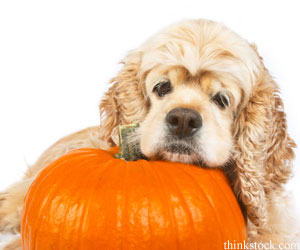
Pumpkins are rich in carotenoids, beta-carotene, alpha-carotene, fiber, zinc, iron, vitamin A and potassium. In fact, you can tell the pumpkin is rich in the antioxidant beta-carotene, just by looking at its bright orange color.
Pumpkin is really simple to feed to your dog too. All you need is canned pumpkin. Canned pumpkin is just as packed with nutrients as fresh pumpkin, according to the Mayo Clinic website. Canned pumpkin is a puree so it is easy to mix in your dog’s food, give it to your dog as a treat or use it as an ingredient when you make dog treats, such as these Pumpkin Paw Prints. Look at the back of the label to make sure you are getting 100-percent pumpkin and not pumpkin pie mix.
Can you feed your dog pumpkin seeds? Yes, but most recommend that you first roast them and then grind them up. Do not add salt.
You do not want to feed your dog the stem or leaves, which are covered in little, sharp hairs that will irritate your dog.
See your veterinarian if you have questions concerning dogs eating pumpkin. We never know how dogs will react to new foods, so only feed a small quantity at first to see if it causes your dog stomach upset, such as gas.
Pumpkin is also the pet owner’s go-to food when it comes to
Dog diarrhea and constipation: Pumpkin has high fiber and water content, which are good for correcting and preventing constipation in dogs, plus can help bulk up your dog’s stool. Start with feeding your dog 1 or 2 tablespoons of pureed pumpkin a day, depending on your dog’s size. Pumpkin may not help your dog with diarrhea or constipation if there is an underlying medical condition. Call your veterinarian for advice if the diarrhea or constipation persists.
Helping your dog lose weight: Some dogs needs to lose weight, but their owners don’t want them to feel hungry. Pumpkin is a great low-fat dog treat that fills a dog up due to its being high in fiber. The proper amount of pumpkin to feed depends on the size of your dog and dietary needs. Consult your veterinarian for suggested amounts.
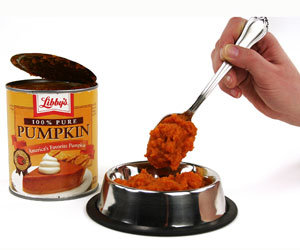
Hypoallergenic Dog Food Recipe
Determining the Allergy
Before you can create hypoallergenic dog food, you must determine the ingredients your dog is allergic or intolerant to. Your veterinarian may suggest an elimination diet, which will initially contain two ingredients, such as turkey and sweet potatoes. You feed this simple diet and watch for allergy symptom improvement. After a period, you and the vet will add ingredients, one at a time. With each addition, you monitor for allergy symptoms. When an ingredient triggers an allergic reaction, you’ve identified an ingredient you’ll want to eliminate from your pet’s diet.
Common Dog Allergies
According to Susan Wynn, former president of the American Holistic Veterinary Medical Association, 10 percent of dog allergy cases are due to food. Symptoms include gastrointestinal issues, ear inflammation, diarrhea, vomiting and itchy skin. Beef, dairy, wheat, eggs, chicken, lamb, soy, pork, rabbit and fish are the most common ingredients responsible for dog allergies.
Ingredient Substitutions
Once you have determined an ingredient your dog is allergic to, seek suitable substitutions. If beef or chicken causes allergic reactions in your dog, use turkey or lamb instead. If dairy is an issue, look for lactose-free recipes. For wheat allergies, avoid recipes with flour, or substitute rice flour or rolled oats in its place.
Basic Recipe
For a basic recipe, add 1 cup of brown or white rice to 2 cups or water in a slow cooker. Add 1 to 2 cups of assorted vegetables such as sweet potatoes, green beans or carrots. Top with a pound of meat protein, such as two chicken breasts or a pound of lean ground beef. Cook on low for 8 hours or high for 5 hours.
Considerations
When making homemade dog food, it is essential that you meet your dog’s nutritional requirements. Discuss your recipe ideas with your veterinarian or a canine nutritionist to ensure your dog meets his nutritional requirements with your home-cooked diet. Armed with your recipes and knowledge of your dog’s dietary needs, your trusted vet will advise you on serving size, supplements and other tweaks.
Doggie Biscotti
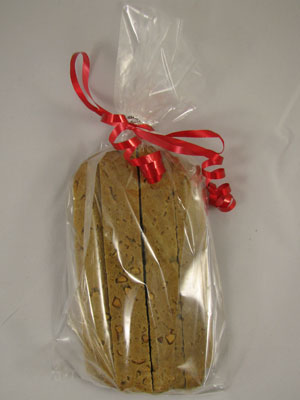
The recipe was provided Harvey Morris, creator of the Baked Chicago blog. Harvey first created this recipe over 10 years ago for his black pugs, Buddy and Rhoda. It was one of their favorite dog treats. Harvey was inspired to use human-grade ingredients because he wanted to feed his dogs unprocessed foods that were good for them – and he had 13 nieces / nephews who were (at that time) under the age of 18. Many of the toddlers were known to share their treats with the Pugs and even drop them on the floor when they were no longer hungry. If that happened with the biscotti, it didn’t matter if a dog or another kid picked it up and ate it!
Peanut Butter-Banana Biscotti, with Peanut Butter Cream Cheese-Yogurt Icing
For Biscotti:
4 cups all-purpose flour (we used gluten free flour and it worked great too)
½ teaspoon baking soda
1 cup crunchy peanut butter
3 bananas, pureed
1 cup water
¼ cup vegetable oil
1 egg
1 tablespoon vanilla
For Icing:
2 tablespoons creamy peanut butter
2 tablespoons plain yogurt
8 ounces cream cheese
3 tablespoons all-purpose flour
Steps to Make Doggie Biscotti
Preheat oven to 325F.
Place flour and baking soda in large bowl. Make a well in the center.
In another bowl, blend egg, vanilla, peanut butter, oil and banana together. Add into the well of the dry ingredients. Start combining together. Add water, one teaspoon at a time as needed.
Knead by hand on table until mixed thoroughly. Form into logs approximately 2″ in diameter. Flatten so that log is 6″ – 7″ wide by 1″ high. Place on baking sheets lined with parchment paper.
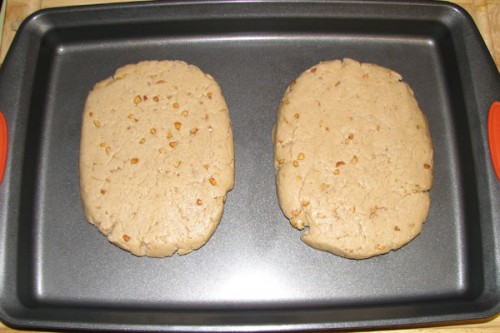
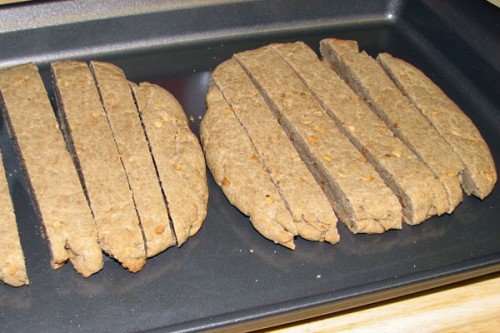
Deviled Doggie Eggs
Deviled eggs are a classic party snack for any occasion, but are always popular for football because of their resemblance to a football shape and of course are always a hit at Easter. With a few small adjustments, deviled eggs can quickly become doggie delights. Filled with protein, they make a healthy and grain-free treat for you and your furry friend. As with any treat, you will want to feed in moderation, especially if it’s your first time feeding a particular snack.
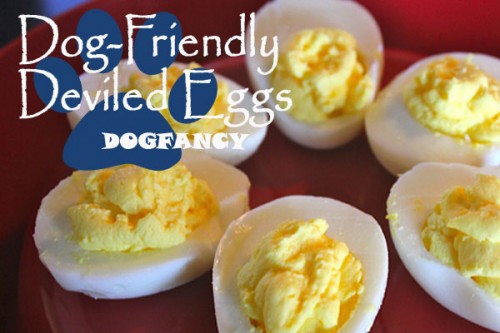
Eggs – as many as you like!
Plain, Unsweetened Yogurt – 1 Tbsp for every 2 eggs
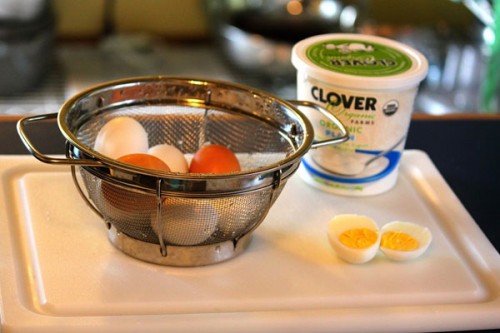
Hard boil your eggs. You can use any method you like, but this one worked for us
Put eggs in a pot and cover them with an inch of water.
Put a cover on the pot and bring the water to a boil.
Once boiling, remove the pot and let sit 15 minutes.
Run eggs under cold water and place in refrigerator to cool.
Once eggs are cooled peel and slice in half the long way.
Remove all of the yolks and place them in a bowl
Add yogurt (approximately 1 Tbsp for every 2 eggs) and mix until you get a creamy consistency.
Scoop mixture into the eggs, or if you want to be fancy, scoop mixture into a plastic bag. Cut the tip off of the bag and squeeze egg mixture back into the egg whites.
